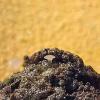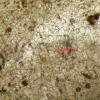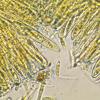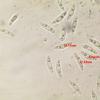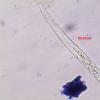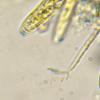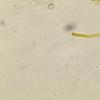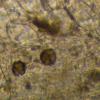
06-08-2022 20:43
Louis DENYAu bord d'un étang près de Belfort (alt 400m) su

07-08-2022 01:57
Stefan JakobssonA light-coloured Hymenoscyphus growing on a cone o

05-08-2022 13:58
 Lothar Krieglsteiner
Lothar Krieglsteiner
on decorticated branch of surely Betula (as there

05-08-2022 14:25
 Lothar Krieglsteiner
Lothar Krieglsteiner
30.5.22, Schloßberg near Weißenstein, Schwäbisc

05-08-2022 14:35
 Andgelo Mombert
Andgelo Mombert
Bonjour, En vue de rédiger un petit article, je

02-08-2022 15:27
Hi all, this find is from 19.03.2022 on herbaceou
Calycina (?) sur cône d'Alnus
Louis DENY,
06-08-2022 20:43
Je cale et ai besoin de votre aide, n'ayant rien trouvé qui corresponde sur ce support.
Merci
Michel Hairaud,
06-08-2022 20:56

Re : Calycina (?) sur cône d'Alnus
Bonjour Louis,
L'approche par support n'est peut être pas la plus pertinente dans ce cas.
L'habitus de ton specimen m'évoque plutôt un Ombrophila. Sans certitude.
Je crois voir des cristaux dans l'excipulum. As tu repéré des tissus gélatineux ?
Amitiés Michel
L'approche par support n'est peut être pas la plus pertinente dans ce cas.
L'habitus de ton specimen m'évoque plutôt un Ombrophila. Sans certitude.
Je crois voir des cristaux dans l'excipulum. As tu repéré des tissus gélatineux ?
Amitiés Michel
Hans-Otto Baral,
06-08-2022 21:51

Re : Calycina (?) sur cône d'Alnus
Indeed I would exclude Hymenoscyphus based on the apical ring type. Ombrophilia is a good option, although the spores look much like a Phaeohelotium. Are there crystals in the exciple?
Louis DENY,
07-08-2022 10:47
Re : Calycina (?) sur cône d'Alnus
Merci pour vos remarques. Je n'ai pas remarqué la présence de cristaux ni de tissus gélatineux, mais j'avoue ne pas avoir prêté beaucoup d'attention à ces caractères, l'aspect des spores m'ayant orienté ailleurs.
En reprenant les photos la présence de cristaux semble bien confirmée.Je vais essayer de retrouver quelques exemplaires ... si les étangs ne sont pas complètements asséchés.
PS : j'ai souvent des difficultés à identifier la présence de tissus gélatineux. Y a-t-il un réactif qui les mette en évidence ?
En reprenant les photos la présence de cristaux semble bien confirmée.Je vais essayer de retrouver quelques exemplaires ... si les étangs ne sont pas complètements asséchés.
PS : j'ai souvent des difficultés à identifier la présence de tissus gélatineux. Y a-t-il un réactif qui les mette en évidence ?
Michel Hairaud,
07-08-2022 13:38

Re : Calycina (?) sur cône d'Alnus
Bonjour Louis,
Regarde le doc que tu as reçu au stage de Bessans -:)
Déjà dans l'eau la textura gelatinosa est particulière . Et le Bleu de Crésyl aqueux permet aussi de les déceler. (par une teinte violette )
J'entends sur les ondes que vous avez aussi la sècheresse chez vous.
Amitiés Michel
Regarde le doc que tu as reçu au stage de Bessans -:)
Déjà dans l'eau la textura gelatinosa est particulière . Et le Bleu de Crésyl aqueux permet aussi de les déceler. (par une teinte violette )
J'entends sur les ondes que vous avez aussi la sècheresse chez vous.
Amitiés Michel
Louis DENY,
07-08-2022 16:26
Re : Calycina (?) sur cône d'Alnus
Je viens de me redre compte l'avoir déjà trouvé (en meilleur état) il y a deux ans. Avait été identifié par Zotto comme Ombrphila rivulorum. Au temps pour moi!
